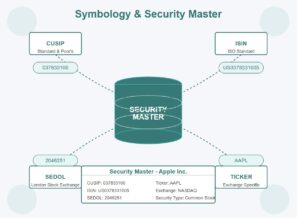Home Education center Estate Planning with Direct Indexing
Estate Planning with Direct Indexing
Table of Contents:
Introduction
Estate planning is a crucial aspect of wealth management. It ensures that assets are transferred efficiently to heirs while minimizing tax burdens. Direct indexing offers a powerful approach to estate planning by allowing investors to own individual securities rather than a pooled fund. This structure provides significant advantages, including tax efficiency, flexibility, and customization. In this article, we explore how direct indexing enhances estate planning. We cover key strategies to optimize wealth transfer and the long-term benefits of tax-aware inheritance planning.
Key Benefits of Direct Indexing in Estate Planning
– Step-Up in Cost Basis
One of the most significant tax advantages of direct indexing in estate planning is the step-up in cost basis. When a beneficiary inherits individual securities, their cost basis is adjusted to the current market value at the time of the original owner’s death. This effectively eliminates capital gains taxes on past appreciation.
For example, if an investor purchased a stock for $50 per share and it appreciated to $200 per share before being inherited, the beneficiary’s cost basis would be reset to $200. This means they only owe capital gains taxes on any appreciation beyond $200 per share if they choose to sell the asset. This significantly reduces their tax liability.
– Tax-Efficient Wealth Transfer
Direct indexing allows investors to manage capital gains strategically. It makes it easier to pass down assets tax-efficiently. Since securities are held individually rather than in a fund, investors can selectively sell specific stocks with lower gains or losses to offset taxable events.
For instance, if a high-net-worth investor wants to transfer wealth to their heirs, they can gift appreciated securities strategically. They ensure that their tax burden is minimized. Furthermore, heirs have the flexibility to maintain the inherited portfolio or make adjustments without triggering a taxable event immediately.
– Customizable Legacy Goals
Estate planning is not just about tax efficiency. It’s also about ensuring that an investor’s values and financial goals are preserved for future generations. Direct indexing provides flexibility to customize portfolios based on individual preferences, including:
- Environmental, Social, and Governance (ESG) investing: Ensuring that the inherited portfolio aligns with socially responsible values.
- Sector exclusions: Avoiding investments in specific industries that do not align with the investor’s legacy.
- Dividend optimization: Structuring holdings to prioritize income-generating securities for heirs who may need regular cash flow.
By tailoring investments to long-term goals, direct indexing allows for a more meaningful transfer of wealth beyond just financial considerations.
Key Strategies for Tax-Efficient Estate Planning
– Strategic Gifting
Gifting highly appreciated securities directly to heirs can help reduce an investor’s taxable estate while also benefiting the recipient. The annual gift tax exclusion ($18,000 per recipient in 2024) allows investors to transfer assets tax-free each year.
For example, a parent with a highly appreciated stock can gift shares to their child. This effectively shifts future capital gains to a lower tax bracket while staying within the IRS’s gift exemption limits.
– Charitable Giving with Tax Benefits
Donating securities with low cost bases to a donor-advised fund (DAF) or charity provides a double tax benefit. It avoids capital gains taxes while receiving a charitable deduction. Instead of selling a stock and paying capital gains, investors can transfer the shares directly. This maximizes the value of their donation.
Consider an investor with $50,000 in low-cost-basis stock who donates it to a nonprofit. Instead of selling and incurring capital gains taxes, they donate directly. They claim a full deduction, and the nonprofit receives the full $50,000 in value.
– Portfolio Transition for Heirs
A common challenge in estate planning is ensuring that heirs receive an investment portfolio that aligns with their financial goals and risk tolerance. Direct indexing enables a smooth transition by allowing beneficiaries to adjust their holdings selectively. This prevents the forced liquidation of inherited mutual funds or ETFs.
For example, if an heir inherits a diverse portfolio with various sectors but prefers technology stocks, they can rebalance accordingly without triggering a taxable event immediately.
Why Choose Direct Indexing for Estate Planning?
Direct indexing offers significant advantages over traditional pooled investment funds when it comes to estate planning:
- Control & Customization: Investors can tailor portfolios to match their legacy goals and heirs’ financial needs.
- Tax Advantages: Heirs benefit from the step-up in cost basis and have flexibility in managing taxable events.
- Efficient Wealth Transfer: Assets can be strategically gifted or donated to reduce tax liabilities while maximizing impact.
For financial advisors and high-net-worth individuals, incorporating direct indexing into estate planning strategies can create lasting financial legacies with minimal tax burdens.
Conclusion
Estate planning with direct indexing provides unparalleled flexibility, tax efficiency, and personalization. By leveraging strategies like the step-up in cost basis, strategic gifting, charitable donations, and portfolio transition planning, investors can ensure a smooth and tax-efficient wealth transfer to the next generation.
With careful planning and the right tools, direct indexing can be a cornerstone of a sophisticated estate plan. It helps investors preserve wealth, align with personal values, and maximize financial benefits for heirs.
Related Pages
- Gifting Appreciated Assets through Direct Indexing (DI)
- Advanced Tax Management Strategies in Investment Portfolios
- Capital Gains Management Core Strategies
- Year-Round Tax Management Strategies: A Comprehensive Guide
- The Great Wealth Transfer: Utilizing Direct Indexing to Meet Changing Client Needs
- Estate Planning Defined
Offer personalized experiences for every client at scale




